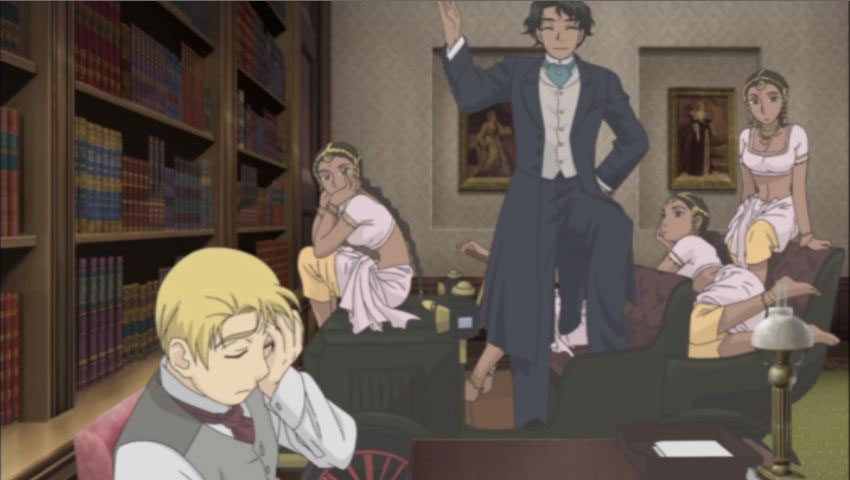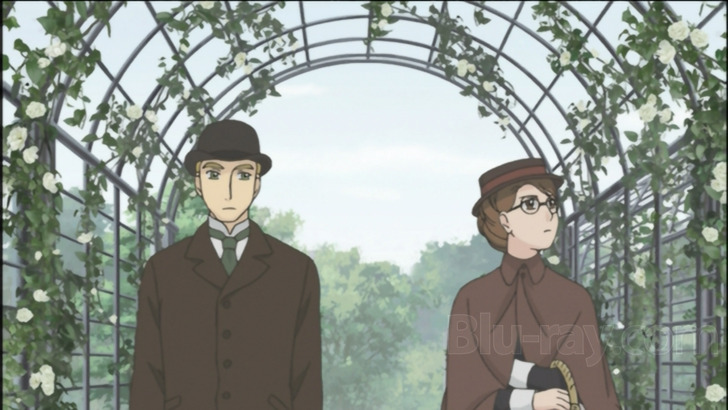Emma: A Victorian Romance
May 20, 2022 · 0 comments
By Jeannette Ng.

Emma: A Victorian Romance concerns the relationship between the titular Emma and William Jones. The former is a shy, bespectacled maid working for Kelly Stownar, a retired governess, and the latter is a young man once taught by that same governess. He is also the first-born son and hence heir to a merchant empire, with all the expectations and social ambitions of his father heaped upon his shoulders. Emma and William’s first meeting is quiet, just shared smiles and companionable reminiscences, but a pair of forgotten gloves gives the two another moment. Another chance meeting comes of William spotting Emma across the street and an impulsive gift changing hands. These are fragile, fleeting moments, barely the beginnings of a romance, even as William obliviously flirts with his sister’s friend, Eleanor Campbell and romantic misunderstandings compound.
Just as one settles into the seemingly sedate pace of Emma as a restrained little story about an emotionally repressed maidservant and a slightly less emotionally repressed young man, Hakim Atawari storms onto the scene with his entourage of trumpeting elephants and languid, scantily clad dancing girls. The Indian prince is a close friend of William’s — they studied together at Eton, of course — and he is wondrously disruptive of the seemingly uptight “Victorian-ness” of it all. His fickle hedonism challenges William’s already wavering sense of duty and he drags the young heir out of his comfortable routine. Shenanigans abound as Hakim glides through Victorian society with his abject disregard for its petty rules, including but not limited to ones about correct motorcar safety and elephant use. His proposal to Emma also rapidly escalates the emotional intensity of the proceedings, forcing both Emma and William to confront their own growing affection for each other.

Despite Hakim and his elephants, the focus is still firmly on the mundane, bordering on slice-of-life as the episodes acquaint us with gossiping housemaids, a blunt shopgirl, a stoic butler and William’s many siblings, as well as the bickering relationship between Kelly Stownar and the gruff handyman, Al.
There is a gentleness to the storytelling, arguably one that is ill-suited to depicting the brutal truth of downstairs drudgery. Despite this, the unpleasant underbelly of Victorian society isn’t wholly ignored. This is particularly notable in the second season, when a butler warns an impressionable young woman against going to Whitechapel for a seemingly idyllic job advertised in the papers, as it is an obvious trap.

Detail is placed on the everyday texture of the late 19th century world, especially with period advertising on trams and buses. The budget strains to populate all these spaces and lavish detail upon them all. From London townhouses to manor estates and junk shops, the interiors are beautifully and believably realised with a keen eye to period detail, held back only by that notorious spaciousness common in anime. Many of the interiors have a vastness to them — a hallway just a little too wide or a room just a little too empty — when what the scene craves is an atmosphere of Victorian claustrophobia.
But it isn’t just the everyday minutiae that are replicated, Emma interweaves the substance of Victorian culture into its plot. Emma stands as an excellent example of “occidentalism”, art made about the West by those outside of it, often offering insight onto both cultures through that collision of assumptions and stereotypes — or at least, some sharp, intriguing twists on old tropes. The West becomes a canvas onto which the artist can project and explore ideas of their own: the unrelenting sweep of history and progress; rigid class systems buckling under change; decaying empires gasping their last breath; personal identities torn between love and duty. The vast landscape of anime and manga offer many examples, such as the exquisitely beautiful Violet Evergarden, the giggling romp into the Rococo that is Nozomu Mochitsuki’s Tearmoon Empire, and Holmesian class revenge saga that is Ryosuke Takeuchi and Hikaru Miyoshi’s Moriarty the Patriot. Through the myriad refractions that is artist and artistry, I often find something deeply resonant, or at least fleetingly fascinating.
In Japanese depictions of the Great Britain in particular, I often wonder if it is that strange mirroring, that despite numerous differences, both countries have somehow become these decaying island empires at the edge of their respective continents. They are both headed by vestigial monarchs, labouring under the weight of tradition, governed by a farce of right-wing government, stratified by a class system that is at once fluid yet hidebound, and overburdened with nostalgia for that ever romanticised past. Perhaps it is from these imperfect parallels that insight is born, or perhaps it is just that these parallels mean Japanese media is more able to pander to me, a British person. But whatever the alchemy, it often rings truer to me than, say, an American attempt at the same.
Jeannette Ng is the author of Under the Pendulum Sun. Emma: A Victorian Romance is released in the UK by Anime Limited.
Leave a Reply